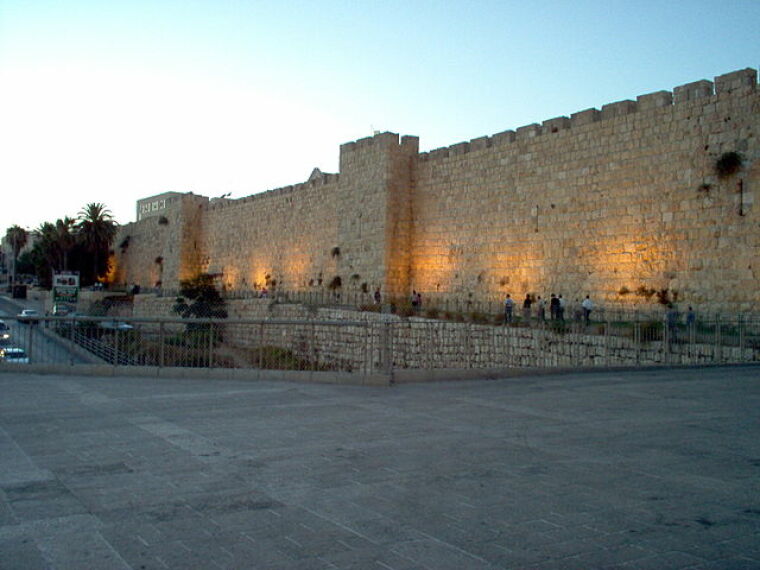Archaeologists uncover evidence of Babylonian destruction of ancient Jerusalem

Israeli archaeologists have recently discovered 2,600-year-old artifacts that could provide concrete evidence for the destruction of Jerusalem at the hands of Babylonians.
The charred artifacts were reportedly discovered while the archaeologists were excavating the City of David in Israel's Jerusalem Walls National Park.
The discovery was announced by the Israel Antiquities Authority (IAA) just days before Tisha B'Av, a Jewish fast day that marks the anniversary of the destruction of the First Temple by the Babylonians around 586 B.C. and the Second Temple by the Romans in the year 70 A.D.
According to Daily Mail, the artifacts discovered by the researchers include charred wood, grape seeds, fish scales, bones and pottery. The archaeologists also found dozens of jars used to store grains and liquids, many of which have stamped handles and rosette seals.
"These seals are characteristic of the end of the First Temple Period and were used for the administrative system that developed towards the end of the Judean dynasty," Ortal Chalaf and Dr. Joe Uziel, IAA excavation directors, explained.
"Classifying objects facilitated controlling, overseeing, collecting, marketing and storing crop yields.The rosette, in essence, replaced the 'For the King' seal used in the earlier administrative system," they added.
The researchers also found a small ivory statue of a naked woman with haircut or wig in an "Egyptian style," which the authorities say indicates the wealth of some residents of the ancient city.
The excavation revealed that ancient Jerusalem was larger than first thought and that it had "extended beyond the line of the city wall before its destruction."
"The row of structures exposed in the excavations is located outside, beyond the city wall that would have constituted the eastern border of the city during this period," Uziel and Chalaf noted.
The researchers explained that past excavations in the area of the Jewish Quarter have shown how the city's population grew at the end of the eight Century B.C., leading to the annexation of the western area of Jerusalem.
They noted that the findings of the current excavation suggest that structures were also built outside of the wall's border on the east, following the city's westward expansion.
The destruction of Jerusalem by the Babylonians was recorded in The Book of Jeremiah, which states: "He burned the house of the Lord, and the king's house; and all the houses of Jerusalem, even every great man's house, burned he with fire."
King Nebuchadnezzar of Babylon besieged Jerusalem in 597 B.C. during the reign of King Jehoiakim. Judah continued to exist as a nation under Babylonian rule with King Zedekiah installed as a puppet king in Jerusalem, but the city fell in 586 B.C. after he rebelled.
 Christians don't have to affirm transgenderism, but they can’t express that view at work: tribunal
Christians don't have to affirm transgenderism, but they can’t express that view at work: tribunal Archaeology discovery: Medieval Christian prayer beads found on Holy Island
Archaeology discovery: Medieval Christian prayer beads found on Holy Island Presbyterian Church in America votes to leave National Association of Evangelicals
Presbyterian Church in America votes to leave National Association of Evangelicals Over 50 killed in 'vile and satanic' attack at Nigerian church on Pentecost Sunday
Over 50 killed in 'vile and satanic' attack at Nigerian church on Pentecost Sunday Ukrainian Orthodox Church severs ties with Moscow over Patriarch Kirill's support for Putin's war
Ukrainian Orthodox Church severs ties with Moscow over Patriarch Kirill's support for Putin's war Islamic State kills 20 Nigerian Christians as revenge for US airstrike
Islamic State kills 20 Nigerian Christians as revenge for US airstrike Man who served 33 years in prison for murder leads inmates to Christ
Man who served 33 years in prison for murder leads inmates to Christ


 Nigerian student beaten to death, body burned over ‘blasphemous’ WhatsApp message
Nigerian student beaten to death, body burned over ‘blasphemous’ WhatsApp message 'A new low': World reacts after Hong Kong arrests 90-year-old Cardinal Joseph Zen
'A new low': World reacts after Hong Kong arrests 90-year-old Cardinal Joseph Zen Iran sentences Christian man to 10 years in prison for hosting house church worship gathering
Iran sentences Christian man to 10 years in prison for hosting house church worship gathering French Guyana: Pastor shot dead, church set on fire after meeting delegation of Evangelicals
French Guyana: Pastor shot dead, church set on fire after meeting delegation of Evangelicals ‘Talking Jesus’ report finds only 6% of UK adults identify as practicing Christians
‘Talking Jesus’ report finds only 6% of UK adults identify as practicing Christians Mission Eurasia ministry center blown up in Ukraine, hundreds of Bibles destroyed: 'God will provide'
Mission Eurasia ministry center blown up in Ukraine, hundreds of Bibles destroyed: 'God will provide' Church holds service for first time after ISIS desecrated it 8 years ago
Church holds service for first time after ISIS desecrated it 8 years ago Burger King apologizes for 'offensive campaign' using Jesus' words at the Last Supper
Burger King apologizes for 'offensive campaign' using Jesus' words at the Last Supper Uganda: Muslims abduct teacher, burn him inside mosque for praying in Christ’s name
Uganda: Muslims abduct teacher, burn him inside mosque for praying in Christ’s name